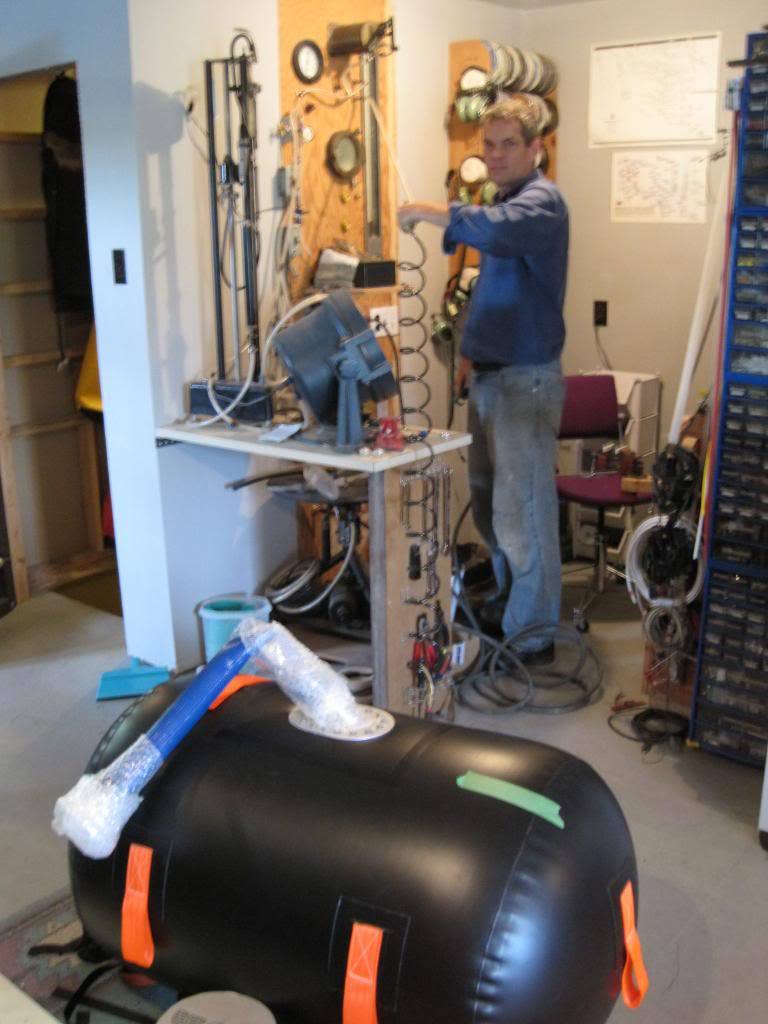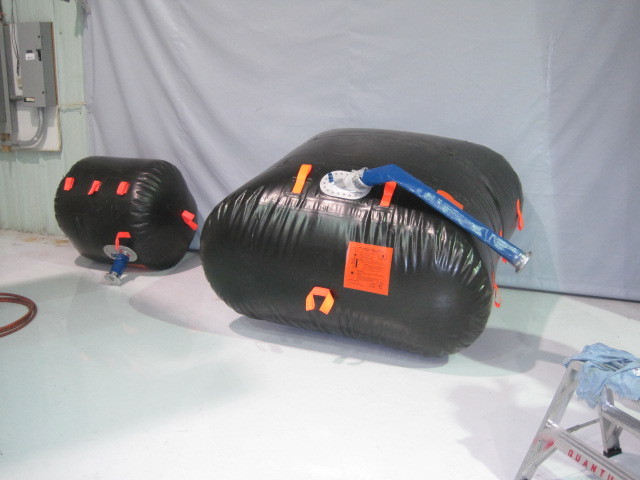I'm looking to design, build & install a reusable auxiliary tank for an N-reg DA42, to gain some extra range for specific missions. Somewhere around 65 gal capacity should do the trick. I'm going for a welded custom designed aluminium tank. (not too keen on bladder designs)
Does anyone have a good lead for a qualified & experienced mechanical shop in UK, Germany, Austria, Scandinavia etc. whom I can work with to build something like this?
Ideally I'd need a shop who's dealt with Form 337 approvals & FAA special flight permits. (as it needs to be an approved installation, and I'd be about +8% above MTOW)
Appreciate any leads you can offer! Plenty of qualified shops in the US, but I'm having trouble locating one in Europe.
I would always go with a bladder. Far more flexible (not pun intended) and easy to take in and out.
Turtle seem to be very well regarded. Check their website.
Are you trying to fit a reusable (your word - i.e. one that stays with the a/c and is only filled if and when needed) or a removable one? If the latter, I'd also go with a Turtle, probably much easier.
I'm looking for a flexible unit (ie. not a one-off ferry install), which can be removed from the aircraft and later reinstalled on demand. It won't be a permanent install. I'd be fine with 1-2 hrs install time when needed.
I agree that a Turtlepac would seem absolutely ideal. However, I've heard a few unfortunate anecdotes re. leaks, which is why I'd be more comfortable with a rigid tank solution. Also the tank will contain Jet A, not avgas - a friend with a Turtlepac warned me that Jet A fumes tends to permeate through the fabric & smell up the cabin.
I've done and flown quit a few ferry tank installations. The most recent were Turtle Pacs. They are an excellent product, and I would not do it any other way. I'm not aware that they permeate and smell up the cabin, I just think that having the fuel in the cabin, you're going to smell a bit no matter what.
I am generally opposed to metal tanks, as by the time you make them heavy enough to withstand crash forces, they are silly heavy and rigid. I was always nervous that a weld would fail under cabin vibration loads, or crash loads, and fill the cabin with fuel uncontrollably.
I have pressure tested a 60 gallon Turtle Pac to 5PSI, and left it over night. It still held more than 4PSI the next morning.
A DA-42 is a less than ideal aircraft to be hefting a metal tank into the back without damaging something, and thereafter, you'd have to secure it. I would obtain the Turtle Pac of the right size, and, from non flammable material, have sewn up a combination restraint strap, and secondary containment bag to sit on the seats.
Assure that the installing agency has an excellent understanding of venting and fuel supply issues. You must be sure that you will not introduce air into the fuel system such that it cannot escape. Putting the ferry fuel into a fuel system vent line can be a good way to assure air is not driven into the fuel lines to the engines.
Have a look at this Canadian guidance material. Though the formal Canadian guidance on ferry tanks has yet to embrace bladders, the local inspectors I have dealt with very much do. In harmony with those inspectors, I have given approval of Turtle Pac systems.
Ferry fuel management in flight is very important, particularly if there are [over water] periods where an emergency landing could not be made, if the ferry fuel became unuseable. It has happened! Nothing worse than ditching into the ocean, carrying full ferry tanks, which you could not use. It has happened. I was flying a Twin Otter, in which the Captain spent 45 minutes in flight fixing the ferry fuel vent line, or we were not going to continue, and would have to land overgross. It all worked out fine, but only because of his excellent knowledge of these systems.
Very much food for thought Pilot DAR. I should reevaluate the bladder system.
A containment bag would largely address my concerns.
TurtlePac makes a standard 66 gal bladder, which would be an ideal size for my application.
Probably the best part is, that I could simply put it on top of the back seat, without having to take the seat out (which indeed is kinda troublesome on a DA42), nor would I need to install a rigid platform. Very flexible. Main thing would be to secure the bladder properly.
I'd plug into the fuel system via a T-joint on the RH side return fuel line (routes from the diesel back into the main tanks), or something similar.
Also the fixed tanks on the DA42 are 76 gal, so I'd exhaust most of the ferry fuel first, before dipping into the mains, hopefully enabling a credible return to the departure point if ferry fuel stopped flowing during flight.
Thanks everyone, appreciate the advice.
Hodja,
When using ferry fuel in flight, presuming the changing C of G is managed, your best procedure is to fly off about an hour's fuel, so you have around a three quarters fuel quantity indication. Then introduce the ferry fuel into the aircraft fuel system at a rate equal to your consumption. You can manage this with many small adjustments to the ferry tank flow valve(s). The result is that you will fly your cruise portion on the ferry tank, with an "indication" of your aircraft tanks all that way along remaining mostly unchanged. You will empty your ferry fuel, and still have your three quarters main tanks, then you will know exactly what fuel, and therefore range and endurance left. This is what I have always done on tanked ferry flights, and even when I used to fly a six tank Cessna 310, fuel could be similarly managed, and it worked great. Having the fuel quantity indicators reading three quarters assures that if they start to fill, you have time to notice, and prevent fuel flowing overboard. Never fill a full tank!
Here is a photo of me pressure testing the Turtle Pac which was installed in a Piper Seneca

Here are the two Turtle Pacs we installed in a Twin Otter

Hi Pilot Dar. How big a job is it to install actual pack in a Seneca, time wise and cost wise. Thanks
I know nothing about this, but have a vague recollection of somebody telling me that a ferry tank should always run the fuel into a fuel tank which is not currently being used to feed the engine.
But, in a "conventional" 2-tank plane, that implies having two ferry tank connections to the fuel system - one to each input pipe going into the fuel selector.
Does anybody actually do that?
Rob the shop I did the testing of the tank and restraint fabrication for did the actual tank installation themselves, so I was not involved with that part of the process. It was not done as a full approval, but rather a flight permit (as was the Twin Otter I worked on). This allows a temporary installation with a slightly lesser showing of design compliance. I don't know the cost of the tank itself, but I would imagine the total cost of the installation work would exceed $7000, when you factor in the required support, restraint, and connection to the fuel system.
There are different ways of connecting to the aircraft fuel system, and they each have their own merits. Putting fuel into an unused tank allows air to rise before the fuel in that tank is used. It requires good fuel management to not overfill that tank in flight. But this is that case with any aircraft with multiple tanks, where fuel must be pumped around.
Aside from special purpose aircraft, and long overwater ferry flights, it can be unattractive to be in the air that long, in an aircraft without personal comforts. I flew a Twin Otter once for 13.2 hours without leaving the seat. Not something I'm eager to repeat!